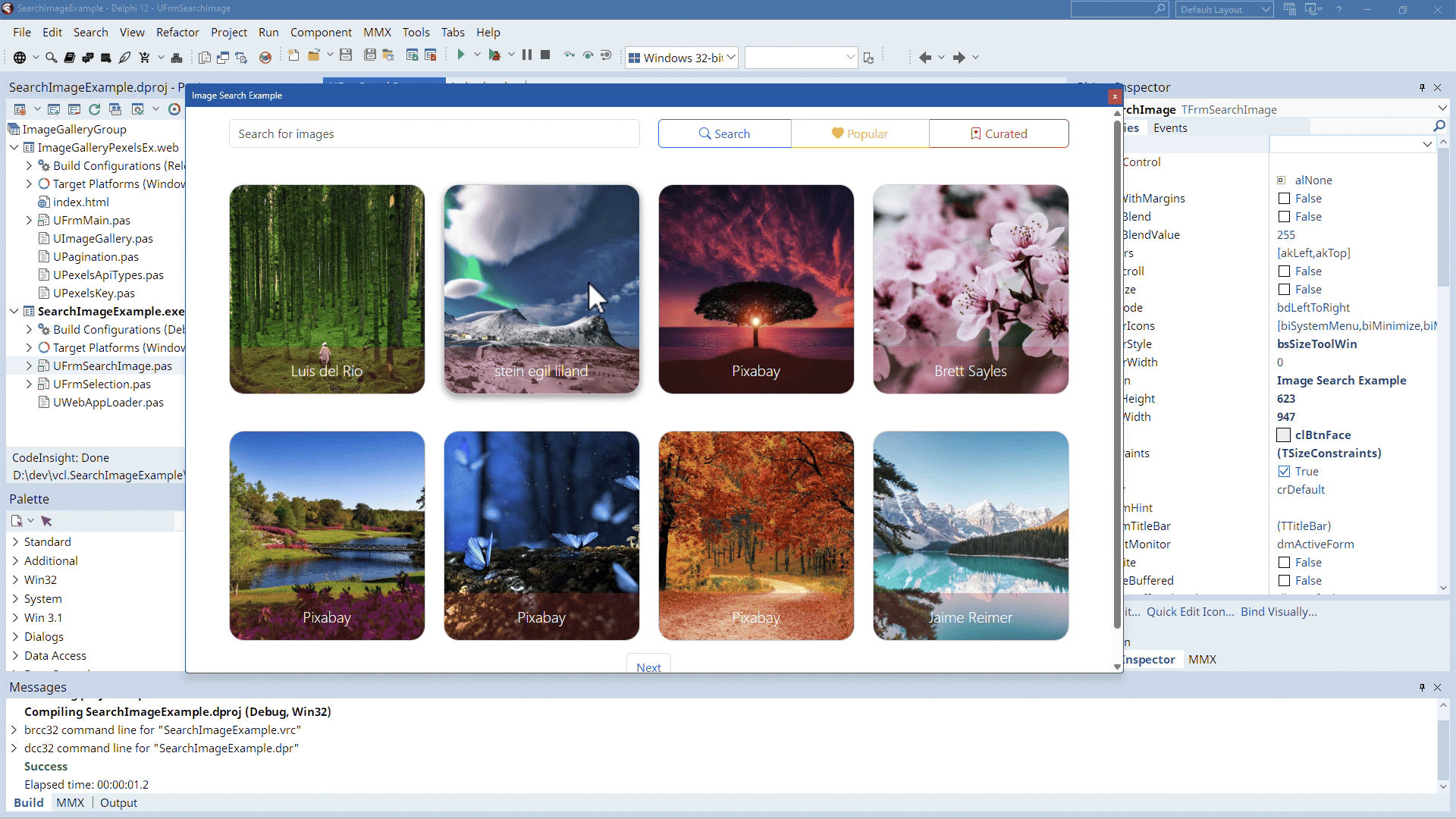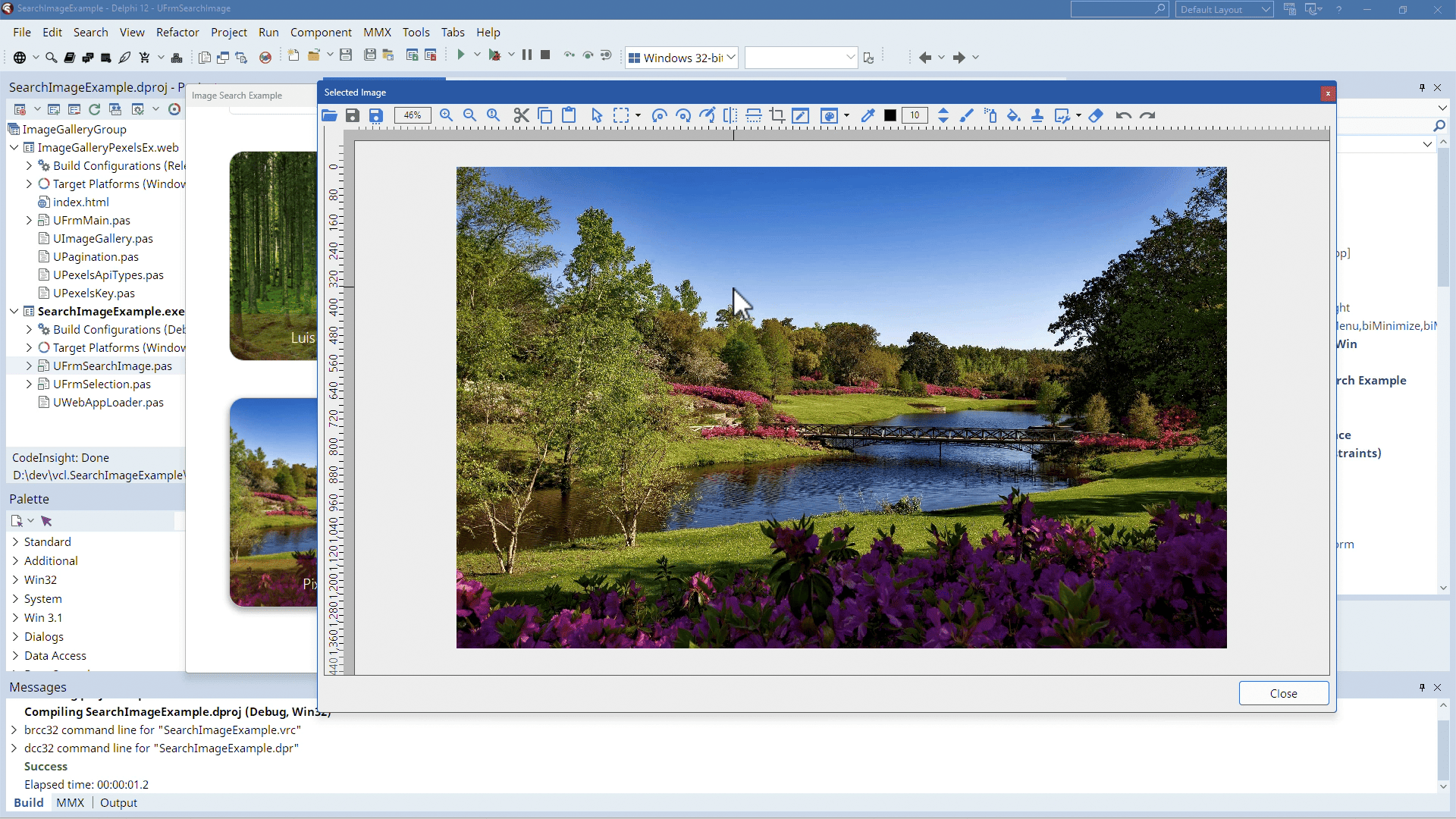Bridging Worlds: Delphi, TMS WEB Core, and the Evolution of Hybrid Desktop Applications¶

In the ever-evolving landscape of software development, the boundaries between different platforms and technologies continue to blur. One such convergence is the fusion of web and desktop applications, facilitated by powerful tools like Delphi and TMS WEB Core. These technologies enable developers to seamlessly integrate web components into native desktop applications, opening up new possibilities for innovation and user experience.
In this article, we'll explore the strengths of Delphi and TMS WEB Core, and how they come together to create hybrid desktop applications that combine the best of both worlds. We'll also provide an example of how to integrate a web component into a VCL application using TMS WEB Core, showcasing the power and flexibility of this approach.
Delphi Strengthens Native Desktop Development¶
Embarcadero Delphi, known in particular for its strength in building native desktop applications for Microsoft Windows, has long been a favorite among developers for its robustness, ease of use, and rapid application development capabilities. With a rich set of components and a powerful integrated development environment (IDE), Delphi empowers developers to create high-performance applications for Windows, macOS, iOS, and Android platforms.
TMS WEB Core: Extending Delphi to Web Development¶
Enter TMS WEB Core, a revolutionary product that extends Delphi's__ capabilities into the realm of web development. Leveraging the power of Delphi's Object Pascal language, _TMS WEB Core enables developers to build web applications using familiar tools and techniques. With TMS WEB Core, developers can create responsive, feature-rich web applications that run in any modern web browser, seamlessly integrating with Delphi's desktop applications.
The Magic of Hybrid Desktop Applications¶
But the real magic happens when these technologies converge to create hybrid desktop applications. By combining Delphi's strength in native desktop development with TMS WEB Core's ability to create web applications, developers can now build desktop applications with dynamic web components. This approach offers the best of both worlds: the performance and functionality of native desktop applications combined with the flexibility and interactivity of web technologies.

Imagine a desktop application with a sleek, modern user interface powered by web components that seamlessly integrate with the native functionality of the operating system. With Delphi and TMS WEB Core, this vision becomes a reality. Developers can create rich, immersive experiences that leverage the full potential of both web and desktop environments, pushing the boundaries of what's possible in software development.

The Example¶
Have a look at an exciting example how to integrate an image picker in a VCL application using TMS WEB Core. This example demonstrates how to leverage the power of web technologies within a native desktop application, creating a seamless user experience that combines the best of both worlds. In addition, it features ImageEn, a powerful image processing library for Delphi, to enhance the functionality of the application.
Conclusion¶
In conclusion, the convergence of Delphi and TMS WEB Core represents a significant milestone in the evolution of hybrid desktop applications. By bridging the gap between web and desktop technologies, developers can unlock new levels of creativity, efficiency, and user engagement. Whether you're building enterprise software, productivity tools, or consumer applications, Delphi and TMS WEB Core provide the perfect foundation for creating the next generation of hybrid desktop applications.